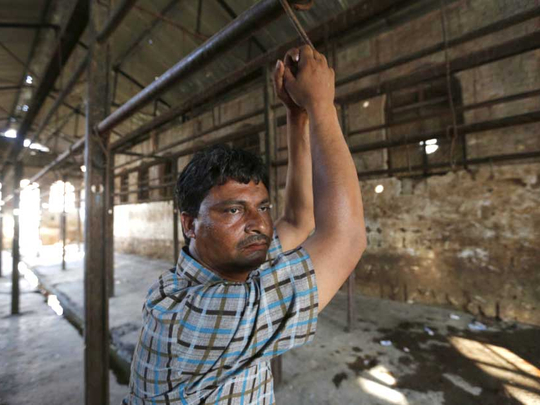
It has been another tumultuous week in the world’s largest democracy, which is best described as a sadistic satire on the millions of Indians who struggle all day for two square meals. India’s economy is flagging, thousands are losing jobs, but our politicians and their stooges chose to focus on the dress-code for meeting the country’s prime minister, sexuality of peacocks vis-a-vis the cow and worse — indirectly imposing a majoritarian religious view through ban on slaughter of cattle, thereby threatening the pluralistic fabric of the country.
The new gazette notification, on the sale of cattle, by the Indian environment ministry not only threatens the fundamental right to food and livelihood, but it also indirectly tries to dictate the independent choices we make in a democracy.
This announcement, titled the Prevention of Cruelty to Animals (Regulation of Livestock Markets) Rules, 2017, those who wish to sell cattle — bulls, cows, buffaloes, steers, heifers and camels — may do so only after they formally state that the animals have not been “brought to the market for sale for slaughter”. At the same time, buyers of cattle at animal markets will have to verify they are agriculturalists and declare that they will not sell the animals for a period of six months from the date of purchase.
The rules, notified by the Ministry of Environment, Forest and Climate Change, demand that buyers “follow the state cattle protection and preservation laws” and “not sacrifice the animal for any religious purpose”. They also prohibit cattle purchased from animal markets being sold outside the state, without permission.
India’s ruling Bharatiya Janata Party (BJP) has always struggled with modernistic rationalism. The party and its leadership have often shocked the nation with their views on women and chauvinistic nationhood. However, when it comes to bovines, the party stands confused and is ruled by fringe elements commonly known as “Gau Rakshaks” or cow protectors.
The BJP, in its report card of sorts upon completion of three years in power at the Centre, has expressed concern over those who have lynched people for consuming beef, beaten cow traders for selling animals, thereby taking the law in their hands.
However, the state leaderships of the party, often chosen by the BJP’s ideological parent, the Rashtriya
Swayamsevak Sangh, has taken a step further, whereby, the government of Gujarat has amended a state law so that anybody found guilty of cow slaughter will be awarded a life sentence. The chief minister of Chhattisgarh has said that those who kill cows in his state will be hanged. Meanwhile, there is a massive crackdown on abattoirs by the new government in the state of Uttar Pradesh, ostensibly targeted at illegal establishments, but clearly trying to hurt the Muslim community that dominates the meat trade.
However, the government has failed to understand the realities of agrarian economy other than providing lip service. The cow for long has been the axle of the rural economy. However, with modernisation of farming techniques, the demand for draught cattle is falling. The milk-producing cows that are being idolised as “mother” will, over time, become a burden to a farmer and he may be forced to starve it to death or worse, may completely give up on rearing cows, thereby affecting the dairy industry in the country.
The government has also ignored the realities of India’s $13 billion (Dh47.81 billion) leather industry and the livelihood of the millions associated with it. It is also a major foreign exchange earner, as most of the leather caters to overseas demand.
On various online merchandise platforms, farmers are now trying to sell their cows, while others are trying to smuggle cattle to neighbouring Bangladesh even at a loss. “Rearing cows has not only become a loss-making proposition, but a hazard to the physical well-being of my family,” said a farmer on national television. He was of course referring to the various incidents of lynching that happened in the country in relation to the beef ban in various states.
This dispute has a long history, which goes back to the early days of the founding of the Indian republic. During the framing of the Indian Constitution, the subject of cow slaughter was one of the most fraught and contentious topics of debate. Several members of the Constituent Assembly called for the prohibition of cow slaughter to be made part of the Constitution’s chapter on Fundamental Rights, on par with the prohibition of untouchability. However, the sentiments of the people of south India and the Northeastern states were kept in mind, where beef eating is not only a custom, but the single source of protein for millions of poor people.
After much debate based on religious sentiments and economic aspects, the issue of cow slaughter was included in the constitution — not as an enforceable Fundamental Right, but as part of the Directive Principles of State Policy, which was meant to guide the state in policy-making, but could not be enforced in any court. Since then, several cow-slaughter laws have been passed by several states based on individual needs.
The new rules are a badly-drafted set of strictures, which is unlikely to withstand judicial scrutiny. It will also raise questions about the intent of the BJP to adhere to the constitutional promise of economic and social liberty for all.
Archisman Dinda is a freelance journalist based in Kolkata, India.










